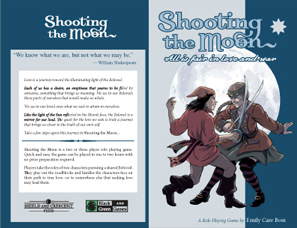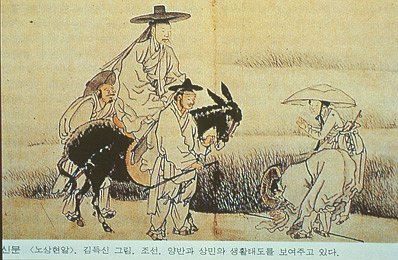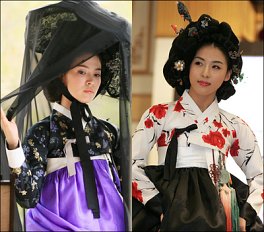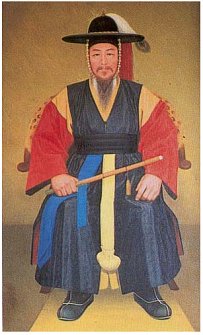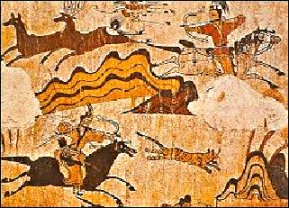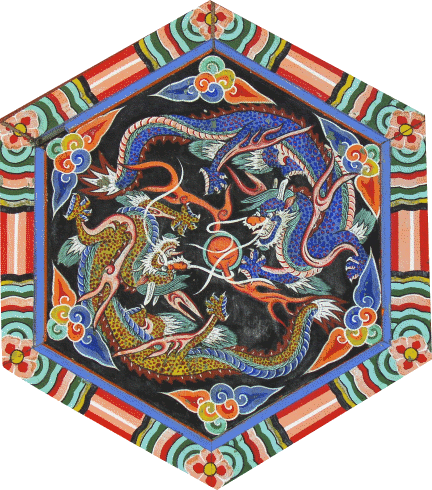“You know what thinking is? It’s just a fancy word for changing your mind.”
– Dr. Who
On March 10, 2019 I was Groundskeeper for a game of Bluebeard’s Bride in the Shinchon area. The game is based on the fairytale of the famous serial black widower Bluebeard, but as you can tell from the title this game focuses on the bride who married him. I personally think of it as a work of feminist horror that focuses on the violence, helplessness, and horror felt by women in partriarchy.
So there we were, five women gathered in a room on a fine Sunday. The first question I got going in was, we have four players. How many Brides are there? The answer: One! Each player plays not a different bride but an aspect of her, called a Sister. The Sisters control the Bride’s actions based on their control of her wedding ring, and Sisters who do not currently hold the ring can also speak and act to an extent. In fact some of the best fun in the game was the Sisters’ increasingly anxious speculations about whether they can trust Bluebeard, and whether the strange happenings in the mansion were due to his crimes or the faithlessness of the other brides. I found this an innovative and enjoyable approach to having a single-protagonist adventure with multiple players, not to mention a sparkling examination of the female protagonist’s inner life.
At this point Ego, who would later choose to play the Fatale, asked:
– This reminds me of that movie. What was it called? About mind-controlling a kid. –
We experienced a couple minutes of confusion trying to figure out what kind of horror movie she was talking about, until we realized…
This is the single easiest way I know to explain the concept of the Sisters. Carl Jung who? Female archetypes what? It’s Inside Out with a grown woman, complete with five temperamental sprites living in your head! No one has just one thought or emotion all the time, right? Much like IO, Bluebeard’s Bride employs a lively narrative device to express the complexity in all of us.
The Sisters, who each express an aspect of the Bride’s self, have relationships and stories of their own that builds up their characters and spices up the game. For instance, the Virgin (the Bride’s naïvete and love of freedom), played by Mwai-jjeong, disliked Ego’s Fatale (the Bride’s sensuality and her will to dominate) because the Fatale would make lewd jokes whenever the Bride got drunk, bringing down her reputation. (I guess we know why she had to look outside the village for a husband, eh?) The Fatale in turn thinks the Mother (the caring but also authoritarian aspect of the Bride), played by Arbonne, is too rigid in her morality and needs to learn the art of manipulating people.
Each Sister also added more depth to the relationship between Bluebeard and the Bride during the Wedding Preparation phase. The Virgin was moved by Bluebeard’s gesture of picking wildflowers and clumsily weaving a garland for her. The Witch (the Bride’s supernatural and feminine power) played by Starfire fell for him when the nobleman took off his fancy shirt to help her family’s farmwork. A gander at his half-naked body didn’t hurt, either. I especially loved this look into the more human sides of Bluebeard that helped bring home how a serial murderer of women could charm so many of them into marrying him, though his fortune certainly helped of course.
The Wedding Preparation is also a golden opportunity for Groundskeepers like me because the players are sitting there and telling us how to torment and scare their characters. With Bluebeard’s Bride, which does not take to advance preparation and where improvisation is (ahem) key, the notes taken during this step help guide and shape the Groundskeeper’s creativity.
Below are excerpts of the notes I took during the break I called after character making:
First, I referenced the Room Threats from the book to outline themes by each Sister.
- Fatale: Body > Gender (the Fatale is not womanly enough to be a good Bride), Religion: Instruction (she is certain Bluebeard is unfaithful to her because he is far too eligible and attractive to settle for a country girl)
- Virgin: Sexuality > Perversion (she smiles at men in ways that make her loop cheap)
- Witch: Body > Beauty Standards (her hair is too wild), Religion > Rituals (she sacrificed one of the chickens in a forbidden ritual), Religion > Underworld (she has already touched the pagan & forbidden)
- Mother: Motherhood > Sacrifice (she regrets leaving behind the chickens she was raising to marry Bluebeard), Religion > Punishment (the Witch did a forbidden thing!)
I also took note of images from the chargen process that left an impression on me and seemed to suggest further conflict.
- Witch: Her hair is not neat enough, conducted a blasphemous ritual with blood-tainted milk (white skin + blood? Blood spreading in bath water?)
- Virgin: Smiles too much, loves freedom and her own space
- Fatale: Talks too much, is conscious of her humble origins
- Mother, Fatale: Drawn to the fresh urban smell and masculine strength of Bluebeard
I wasn’t able to use everything I wrote down and had additional inspiration from outside my notes, but getting down even these fragmented impressions helped me organize my thoughts and gave me ideas for images and motifs to use during play. These notes also make me wistful, by the way, because I could have done so much more to mess up the Sisters.
You know the story of Bluebeard, right? Sketchy rich guy plagued by rumors about his mysteriously disappeared wives. He hands the keys of his palatial mansion to his newest innocent bride and gives her free run of the house except for one room. Then he is urgently called away and forced to travel before the newlyweds can even consummate their marriage.
The play begins with the Bride at home, after her groom has ridden away.
– The Bride finds her gaze drawn to one of the keys on the ring. Mother, tell me what it looks like. –
– It is gold-colored, and extraordinarily large and long. The gold has flaked off in places, as though it has been plated. Despite its coloring it comes across as austere rather than luxurious. –
Once a Sister gives a description of a key, the Groundskeeper describes a room based on the key. I linked the key to Religion, one of the Mother’s motifs, to come up with an old chapel. Since the Mother missed the chickens she had to leave behind to marry Bluebeard, I further linked this place to the threat of Motherhood > Sacrifice to make it about a mother who had her children stripped from her by Bluebeard.
– The door that matches the key is of clean-grained wood of a pale gold hue. The handles are two hands held palm together in prayer. When you push the key between the wooden palms the lock opens smoothly. When you take the hand-shaped handles and push, the doors open. The room beckons. You enter, and the door closes behind you. –
In the chapel, where golden sunlight spills through stained glass, the Bride meets a crying maidservant who weeps and prays before the altar to get her children back. The Bride witnesses horrible bloodshed when the glued-together remains of small children’s ashes and bones fall upon a priest, tearing him apart. She is forced to doubt her own perceptions, however, when the priest she just saw die emerges from the confessional as though nothing had happened. After trying to console the weeping maid and kicking away the ash-children who tried to climb up her legs, she tells herself Bluebeard didn’t take anyone’s child away–he was just taking care of children who had no one else to turn to. She takes the gold brocade behind the altar as a token of Faithfulness. It is pure blasphemy for a wife to cast aspersions on her husband, after all.
That faith is challenged in the very next room. A pretty key adorned with pink flowers opens a glass hothouse filled with the very wildflowers that Bluebeard had picked for her, drawing cries of admiration from our bride. The Virgin instantly sets herself to weaving a garland for her hair from the blooms, improved to be more vivid and fragrant than the wild ones that grew behind her house. At that moment a woman rises up from a shallow grave mere feet away, the flowers wrapped around her body and growing out of her eyes. She harangues the Bride, saying women must be perfect flowers of silence and obedience; the Bride’s cries turn to screams of horror. The garland she has woven into her hair dig roots into her scalp, and frantically tearing them out leaves her bleeding.
The Bride turns the flower woman’s attention to another victim and escapes, but her mind is filled with doubt. Was the woman a former bride of Bluebeard? What happened to her?
The next room is a woodcrafting workshop opened with a wooden key, and the Bride is frightened to find yet more strange children made half of wood. When the carpenter tells the children to “Go to your mother” they go and cleave to a grotesque wooden form in the corner, and the Sisters tell each other that Bluebeard must have been tricked by a monstrous wood woman into having strange children with her.
The Mother puts the rest at ease, telling them such misfortune does not befall a woman of worth. The Virgin tells herself that she is more beautiful than any flower, and will make Bluebeard happy unlike the prior women. The Fatale, formerly suspicious of Bluebeard, actually feels herself eased by the evidence of a former wife. It’s the Witch who feels new suspicions spring up, but the other three won’t listen and the Bride reaffirms her Faithfulness to Bluebeard.
When the Sisters open a beautifully crafted and bejeweled door whose lock fits a sparkling silver key, a room full of jewelry greets the Bride with its splendors, overwhelming her with her bridegroom’s wealth and his love for her. The moment the Fatale tries on a diamond necklace, however, the Bride falls over from its crushing weight, and the Sisters are overcome with the visions of the many women who wore the same necklace and how they died. The Virgin tries to tear it off but only succeeds in cutting her hand. The Bride crawls from the room, staggering under the weight of lives and blood and the conviction that Bluebeard killed his brides. As soon as she makes it outside the door the diamonds shatter like glass, the unnatural weight disappearing with them.
This, hilariously enough, was the moment the Mother and Virgin turned away from Bluebeard for good. “He gave us fake diamonds?!” We all burst out laughing at that. Murder is one thing, but fake jewelry is absolutely unforgivable. You know?
With two tokens of Faithfulness and two of Disloyalty, the Bride is torn between belief in and suspicion of Bluebeard. A search for the door opened by the night-black lacquered key that the Witch is drawn to leads them to a basement the Bride didn’t know existed, one enveloped in a darkness so deep it stifles the light of her candle.
There is light in this darkness, however. Wherever the Bride stepps the wildflawers from home, the same flowers Bluebeared once plucked for her, spark with illumination to light her way. They aren’t the “improved” variation that overwhelmed her with its scent in the hothouse but the small, unassuming blossoms she remembered from home, each a tiny but clear point of light.
She finds them at the center of the room, not the lurid litany of beauty and death that was etched across her mind in the jewelry room, but sad and shy shadows in the darkness. They ask the Bride, Adeline (that is what the players decided to call her), to stay: It’s comfortable and safe here, they say. Don’t return to the world of men that took their lives so cruelly.
Adeline, however, says no. She won’t hide from the sun like that. She will take the evidence to the town and stop Bluebeard. She consoles them in turn, telling them they can be brave no matter how hard and scary things are. When she has gone around the circle of grieving women she finds herself back aboveground, in front of the house. She turns her back on Bluebeard’s mansion and goes home, holding gold brocade, flower petals, broken glass, a block of wood, and a small clump of wildflowers.
Did the villagers believe Adeline when she came home alone a mere day after her wedding, her wedding dress torn and bloody, claiming her rich husband is a murderer and holding out a small pile of knick-knacks as proof? Would you have believed her? I think the important thing is that she went from ignoring and pushing away the voices of other women’s pain, telling herself that she is different and she alone would be loved, safe, and happy, to believing them, holding them by the hand, and finally going back to try and stop the carnage. To me the story of that change, that courage, was the true story of our session.
Going into this game, my biggest concern was the balance between the “feminist” and “horror” aspects of its premise. Fall off that tightrope and I feared that only the horror would remain and the worst parts of the genre at that, making a numbing show of violence against women rather than empathizing with their pain.
It was the players, not I, who found the answer to this dilemma. Adeline started out fearing and disbelieving the brides in the mansion, insisting that she was different, that she would “win” an unwinnable game by being more pious, more obedient, wiser, and more mature. After witnessing the depth of their pain she finally realized she was just like these women. That they felt the same fear and the same pain, and their fates were inseparable from hers. It was the conversations between the Sisters, veering between fear and hope and a hundred other emotions, that led to this conclusion. These conversations were the heart and conscience of the game.
Once I had this insight I realized that my role as Groundskeeper wasn’t just to scare the players or to keep ratcheting up the horror. That may have worked for a different game, don’t get me wrong, but the more sad than frightening final room with the ghosts of the women felt right for that moment and for that particular table.
I am not opposed to the concept of showing women’s pain, of course. The house rightfully holds sad and horrific memories of violence, and the Bride would be traumatized for experiencing these memories. My role as Groundskeeper, I came to believe, was to follow the players’ signal and to support them so that they are not numbed by the horror but can feel and empathize with the victims.
The change in Adeline as she went from rejection and othering of women’s suffering to empathy and solidarity was a continuing thread in a sometimes difficult session. It was something we could all hold onto, a bond that held us together. Enough of these threads may, in time, weave together into a lifeline that will save us in the end.
(Translated from the original Korean post)


